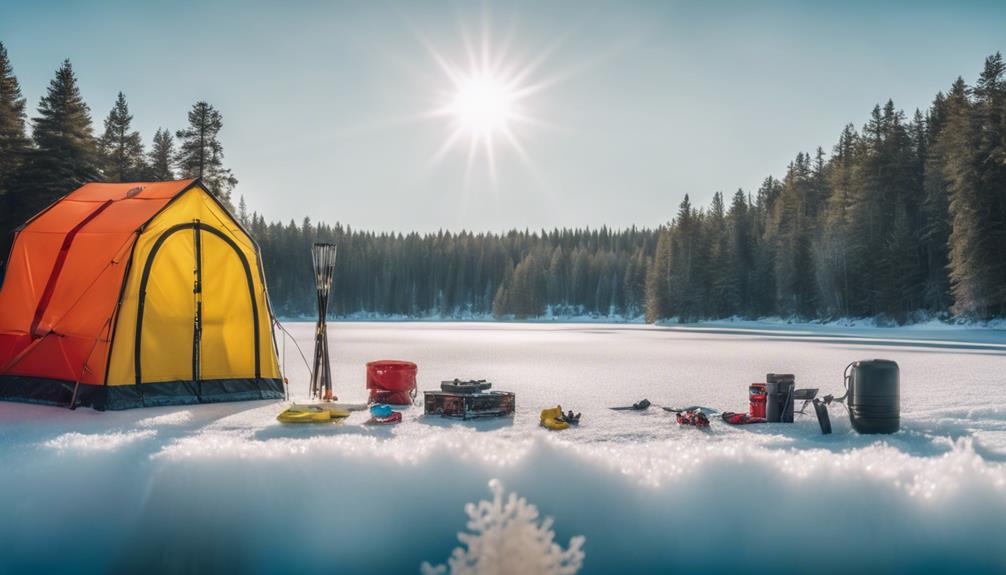Fly fishing is an exciting and rewarding outdoor activity that allows you to connect with nature while honing your fishing skills. For beginners, the right fly fishing setup can make all the difference in enjoying this beautiful sport. In this guide, we will cover everything you need to know about fly fishing setup for beginners, ensuring you’re well-prepared for your first adventure on the water.
Understanding the Basics of Fly Fishing
Before diving into the specifics of a fly fishing setup for beginners, it’s essential to understand what fly fishing is all about. Unlike traditional fishing methods that use baited hooks, fly fishing utilizes artificial flies to mimic the look and movement of insects or bait fish. This technique requires a unique setup that typically includes a fly rod, reel, line, and flies. As a beginner, familiarizing yourself with these components is crucial for success on the water.
Choosing the Right Fly Rod
Selecting the right fly rod is one of the most critical aspects of a fly fishing setup for beginners. Fly rods come in various lengths, weights, and materials, each designed for different fishing conditions and species. Beginners should opt for a rod that is versatile and easy to handle. A 9-foot, 5-weight rod is a popular choice for those starting, as it offers a good balance of strength and sensitivity. Look for a rod made from graphite or fiberglass, as these materials provide durability and flexibility, making them ideal for beginners.
Finding the Perfect Fly Reel
The fly reel is another essential component of your fly fishing setup. It serves to hold the fly line and provides a means to retrieve your catch once hooked. When choosing a fly reel, ensure it matches the weight of your fly rod. For example, if you select a 5-weight rod, you should choose a 5-weight reel. Beginners should also look for a reel that features a smooth drag system, which will make it easier to control fish during the fight. A good quality reel will enhance your overall fishing experience and boost your confidence as you learn the ropes.
Selecting the Right Fly Line
Fly line is a crucial element in your fly fishing setup for beginners, as it is responsible for casting the fly and controlling its movement in the water. There are various types of fly lines available, but beginners should focus on floating lines, which are easier to handle and provide better visibility. When selecting fly line, make sure to match its weight to your fly rod and reel. A weight-forward design is an excellent choice for beginners, as it aids in casting and allows for better control over your flies.
Choosing Flies for Your Fishing Adventure
The flies you use can significantly impact your success while fly fishing. As a beginner, it’s essential to have a selection of basic flies that cater to different fishing conditions. Dry flies mimic insects that float on the water’s surface, while nymphs represent underwater larvae. Streamers imitate bait fish, and terrestrials resemble land-based insects. A good starter kit should include a variety of these types, allowing you to adapt to different environments and species. Research local hatches and conditions to help you choose the best flies for your fishing spot.
Essential Accessories for Fly Fishing Setup
In addition to the core components of your fly fishing setup, several accessories can enhance your experience on the water. A good pair of polarized sunglasses is essential for protecting your eyes from harmful UV rays while allowing you to see into the water. A fishing vest or pack can help you stay organized by providing storage for flies, tools, and personal items. Other useful accessories include a landing net for safely landing fish, forceps for removing hooks, and a fly box to keep your flies organized. Investing in these essentials will set you up for success as a beginner fly angler.
Learning Casting Techniques for Beginners
One of the most challenging aspects of fly fishing for beginners is mastering the casting technique. Proper casting is essential for delivering your fly accurately and presenting it in a way that entices fish. Start by practicing the basic overhead cast, which involves lifting the rod to create tension in the line before snapping it forward. Make sure to keep your wrist straight and use smooth, controlled movements. As you become more comfortable, experiment with different casting techniques, such as roll casts and sidearm casts, to adapt to various fishing situations. Watching instructional videos or taking a casting class can also be beneficial for honing your skills.
Tips for Successful Fly Fishing as a Beginner
As a beginner, it’s essential to approach fly fishing with an open mind and a willingness to learn. Start by choosing a local waterway known for its beginner-friendly fishing opportunities, and don’t hesitate to reach out to local fly shops for advice on fishing conditions and techniques. Joining a fly fishing group or finding a mentor can provide valuable insights and support as you navigate your new hobby. Remember that practice makes perfect, so spend time on the water honing your skills and learning from each experience. With patience and persistence, you’ll soon find yourself enjoying the thrill of fly fishing and catching fish.
In conclusion, setting up for fly fishing as a beginner may seem daunting, but with the right equipment and knowledge, you can easily get started. Focus on selecting appropriate gear, mastering casting techniques, and understanding the fundamentals of fly fishing. With time and practice, you’ll develop your skills and discover the joy of this beautiful sport. Happy fishing!
